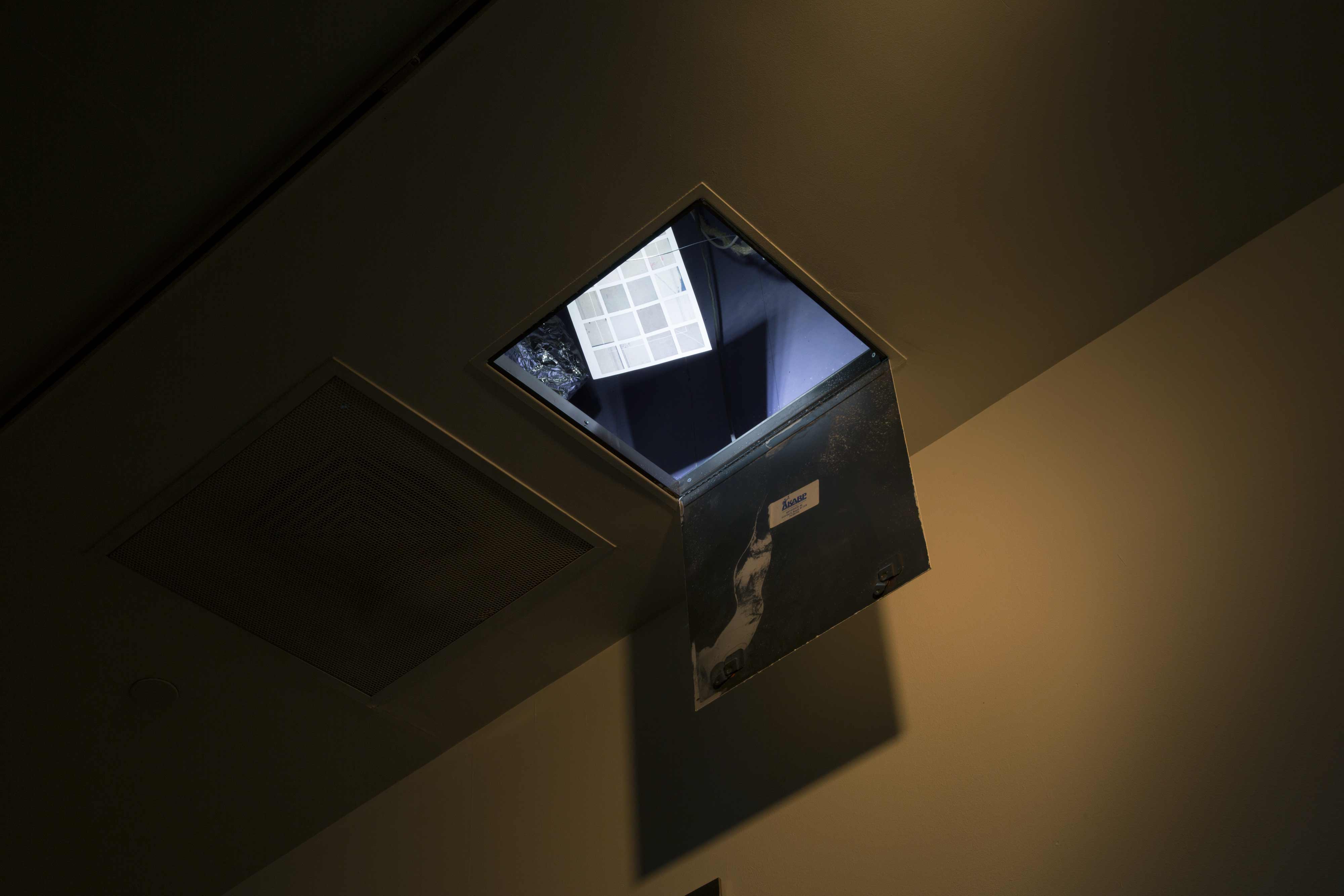Like a Perhaps Hand
2016
Concrete Brick, Gravel, Inkjet Print, LED, Six Channel Audio Track, Halogen Light, Microcontroller, Digital Print, Steel
I
The viewer is confronted by a large structure constructed of concrete bricks, located on the floor in the initial exhibition space. Its structure is a six-square grid, orthogonally misaligned from the urban grid, instead aligning to the compass north. Its form evokes the excavation or reconstruction of an unknown past or the foundations of a possible future structure. It contains an embedded network of choreographed programmed lights casting inwardly to illuminate the thin space of questioning, sequenced to constantly shift over approximately one hour, changing the conversational logics, slipping through internal cracks, and modeling the limits of the space. Small pieces of gravel are loosely formed into probabilistic patterns and cast shifting shadows across the sunken area. It is unclear to what the structure corresponds, and it is embedded within a large structural concrete pillar, including it in its modeling of the space and unsteadying possible scale and historical referents. Part of a triad of works which considered the obfuscated view, semiotics of the image, historical reconstruction of the architectural site, and ways of thinking through unhinged subjectivities and embedded histories. A key interest was around light and the conditions of visibility and invisibility inside the space of the gallery.
II
A darkened subterranean space contains shifting multi-channel resonant audio directing a viewer’s attention into the elongated room. Infrequent brief bursts for 300 microseconds of high-intensity light can be anticipated by audible frequency shifts, briefly impressing after- images onto the retina of viewers from photographic plates installed in three locations. Attached to the walls in these points are large metal plates affixed with large digital prints orthogonally aligned 29° to counteract the Manhattan Street grid. Considering their reception in time the images exist primarily as retinal after-images, slowly revealing themselves after the perception of several flashes to be digital reconstructions of the space of the gallery, with an added palimpsest of all other structures historically present on the site of exhibition – momentary virtual mirrors created through simulated 3D reconstructions of archival documents. Unlike optical mirrors these devices render the viewer invisible, replaced by the visual presence of past structures including the boiler room of a 1912 university building, and the retaining wall of a significant 19th Century New York market hall which once divided the space. The natural light moves through the uninterrupted space of the virtual reconstruction and encounters its past, proposing an engine of historical resuscitation powered by light.
III
Oriented to leave the exhibition, the viewer notices a sliver of cold light projecting from an opened hatch in the ceiling. Suspended in the infrastructural space between the ceiling and the floor above is a printed image caught on a structural beam, fluttering in the wind of the HVAC system. The print depicts a grid of sidewalk panels photographed from across the city which together reveal a chalk drawing which mimics the directionality of the unseen light source. It is communicated to the viewer that an unspecified number of similar images have been permanently affixed to hidden structural elements throughout the institution. These images remain hidden, and the work will remain extant for the duration of its architectural host. The work draws on cross-cultural ritual practices in which the placement of symbolic objects into the foundations and structural elements of buildings was believed to pass on their spirits and lend stability.





